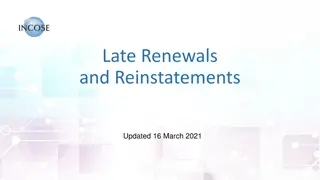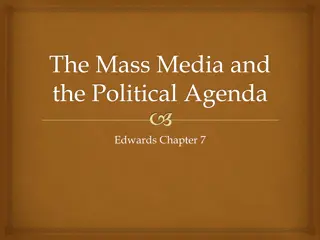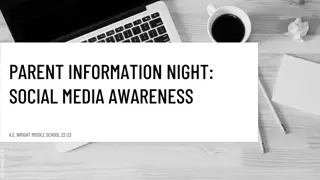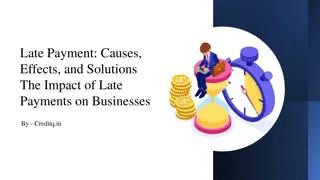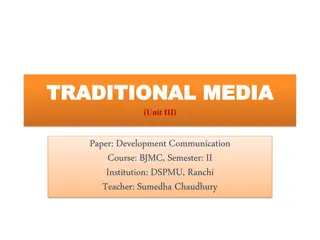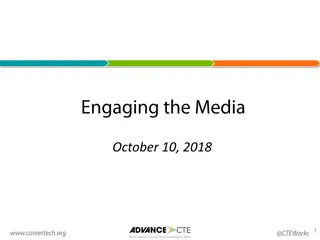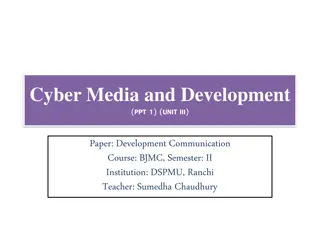Insights into Late Night Women's Hour and Its Impact on Media Diversity
Late Night Women's Hour (LNWH) is a spin-off from the long-running BBC Radio 4 series, Woman's Hour. Launched in 2015, LNWH challenges traditional media norms by featuring open discussions on current social issues, gender equality, and more. Despite its late-night airing, LNWH provides a platform for diverse voices and unique dialogue. This program reflects a shift towards inclusive content production in the media landscape, as seen through its specialized focus on women's perspectives and engaging discussions.
Download Presentation

Please find below an Image/Link to download the presentation.
The content on the website is provided AS IS for your information and personal use only. It may not be sold, licensed, or shared on other websites without obtaining consent from the author.If you encounter any issues during the download, it is possible that the publisher has removed the file from their server.
You are allowed to download the files provided on this website for personal or commercial use, subject to the condition that they are used lawfully. All files are the property of their respective owners.
The content on the website is provided AS IS for your information and personal use only. It may not be sold, licensed, or shared on other websites without obtaining consent from the author.
E N D
Presentation Transcript
Late Night Women s Hour
Friday at 11 pm Product context: LNWH had it s first broadcast in 2015. Is presented by Lauren Laverne Late Night Woman's Hour is a spin-off from the daily magazine programme Woman's Hour, a long-running BBC Radio 4 series. Its audience is females and talk about topics to an older audience. Their first episode was about forgiveness. with a one-month pilot run, scheduled twice-weekly on Thursday
Historical context The original Woman s Hour first broadcast in the 1940s. This was broadcasted 1 hour per day or per week, for a niche audience of females. Because Woman s Hour was broadcasted towards women that suggests that there was a strong sense of patriarchal control, both on the BBC and in UK society at the time. In LNWH they have open discussions, raises topics about current issues or shift in society such as an increased in gender equality.
Institution and economics BBC is financed by a license fee, the fee at 147 currently. The UK population pay this in order to watch TV and radio broadcasts, even if they re not from the BBC. Since 1922 the BBC has been committed to its mission to inform, educate and entertain. LNWH is aired at 11pm, which could be seen as an unpopular time, and reaching to a niche audience. Therefore commercial broadcaster might see a LNWH as being too speicalised.
Institution and economics LNWH has only female contributors and has a lack of sound effects and music, there is just dialogue about the topic they re discussing. They often use specialised vocabulary. The BBC, however, have a commitment to producing a wide selection of content, aimed at all sections of the population. Even though LNWH is aired at 11pm, that doesn t mean listeners have to listen in at that time, they can listen to it the morning or at a later date, by listening to it digitally. However broadcaster airs live might be less significant.
Institution and economics - Theoretical approaches - Power and media industries (Curran and Seaton) It could be argued that programmes like LNWH, and the general product output from the BBC, challenges the idea that the media is run purely for economic profit and power, while being controlled by a small number of powerful companies, such as Sky, News Corporation and Disney, for example. Late Night Woman s Hour might also be used to support Curran and Seaton s idea that socially diverse patterns of ownership help create conditions for varied and adventurous productions, In other words, the more variation of media companies which exist leads to greater choice and potential risks to be taken with product. It could be argued that the success and growth of podcasts across a range of topics and genres could also be due to the relatively inexpensive production costs and hosting facilities on a range of divergent technologies.
Institution and economics The effect of digital technology changes on radio a platform, specifically the switch from FM to DAB. DAB gives producers more freedom regarding programming LNWH was formed to appeal to those audiences. It is on at 11pm and often features more controversial and adult content. The 11pm time slot is also good for targeting women who may be busy in earlier evening with their own families.
AUDIENCES AUDIENCES Some women might enjoy the idea of a programme aimed specifically at them and their needs. Some older women, or those with more old-fashioned values, might find the content of LNWH too shocking. Or they may enjoy the Home ep at it based around domesticity. Some feminist listeners might have been disappointed by the episode as it focuses on the household and perhaps might feel too old fashioned for them. Some people argue that LNWH focuses on white middle class females and fails to include a range of other women.
THEORETICAL APPROACHES THEORETICAL APPROACHES Stuart Hall s Reception Theory Consider how a negotiated or oppositional reading of the programme might be used. How would a male audience respond to an all-female broadcast, debating issues from an entirely-female perspective? Feminist Theory A broad term which could also cover aspects of society and culture. Radio for women about women by women The series provides women with a vehicle through which to discuss and construct representations of gender The set product programme Home sets up a diverse and challenging discussion on the subject and the changing place of women within that environment







